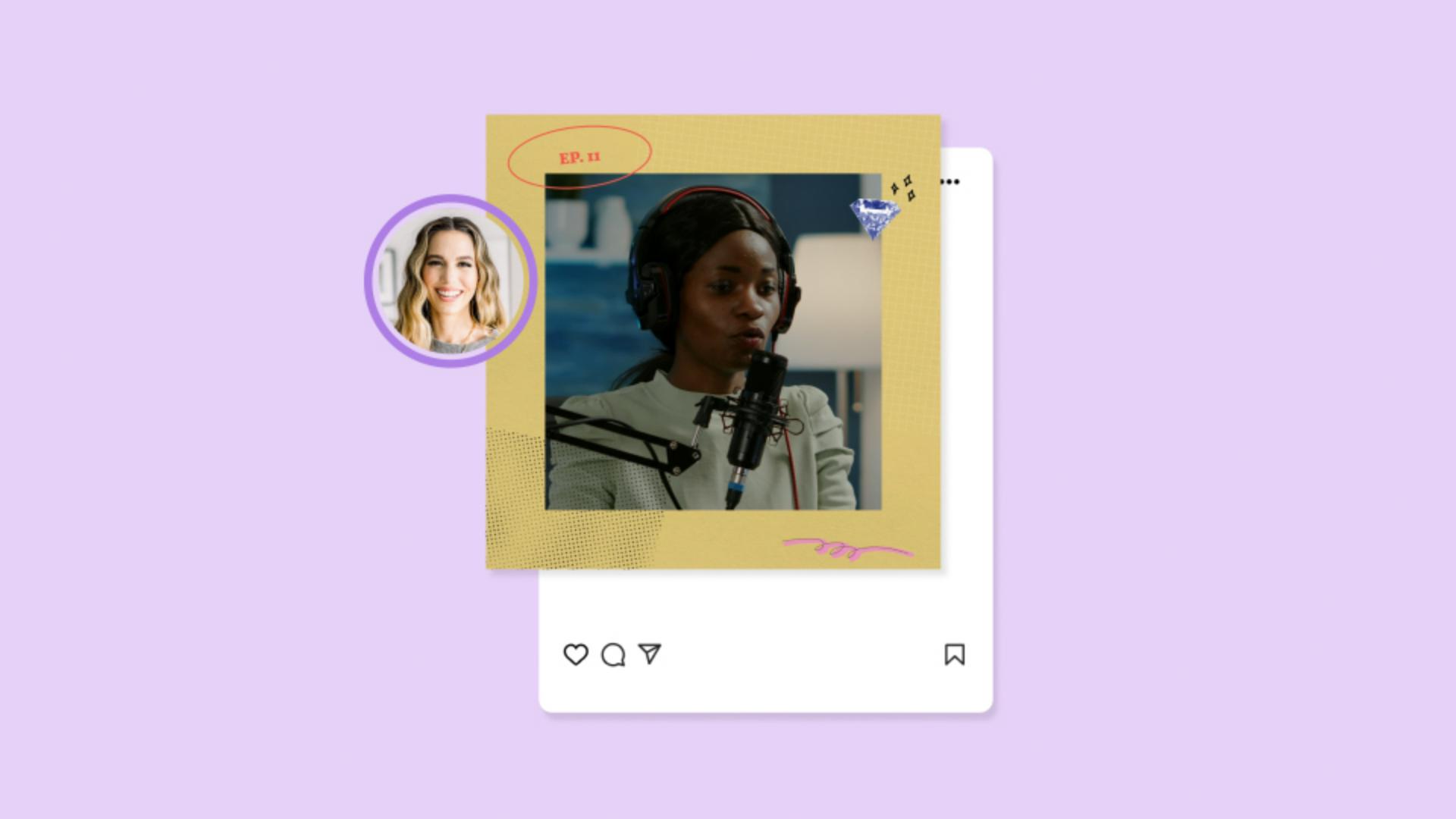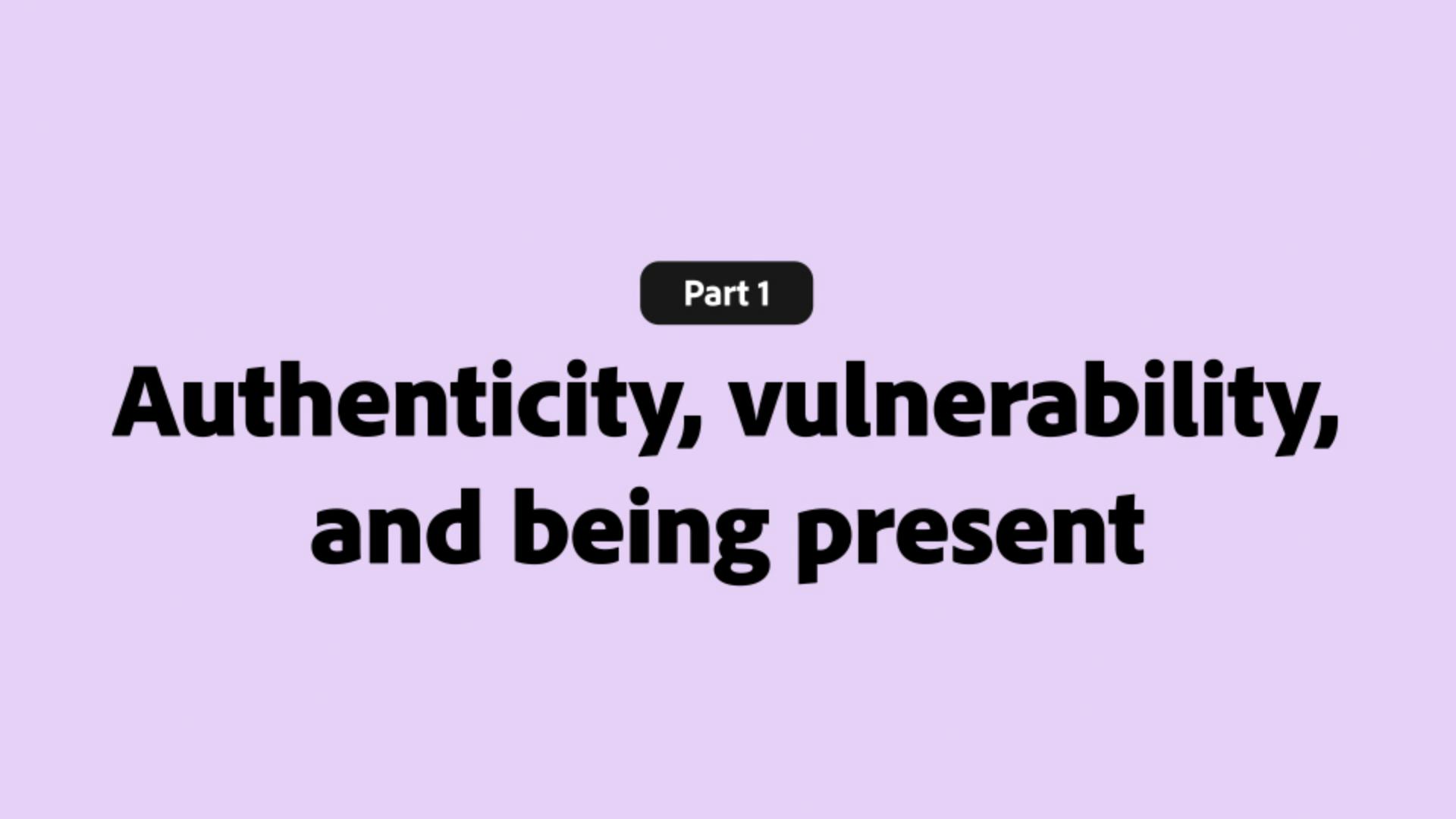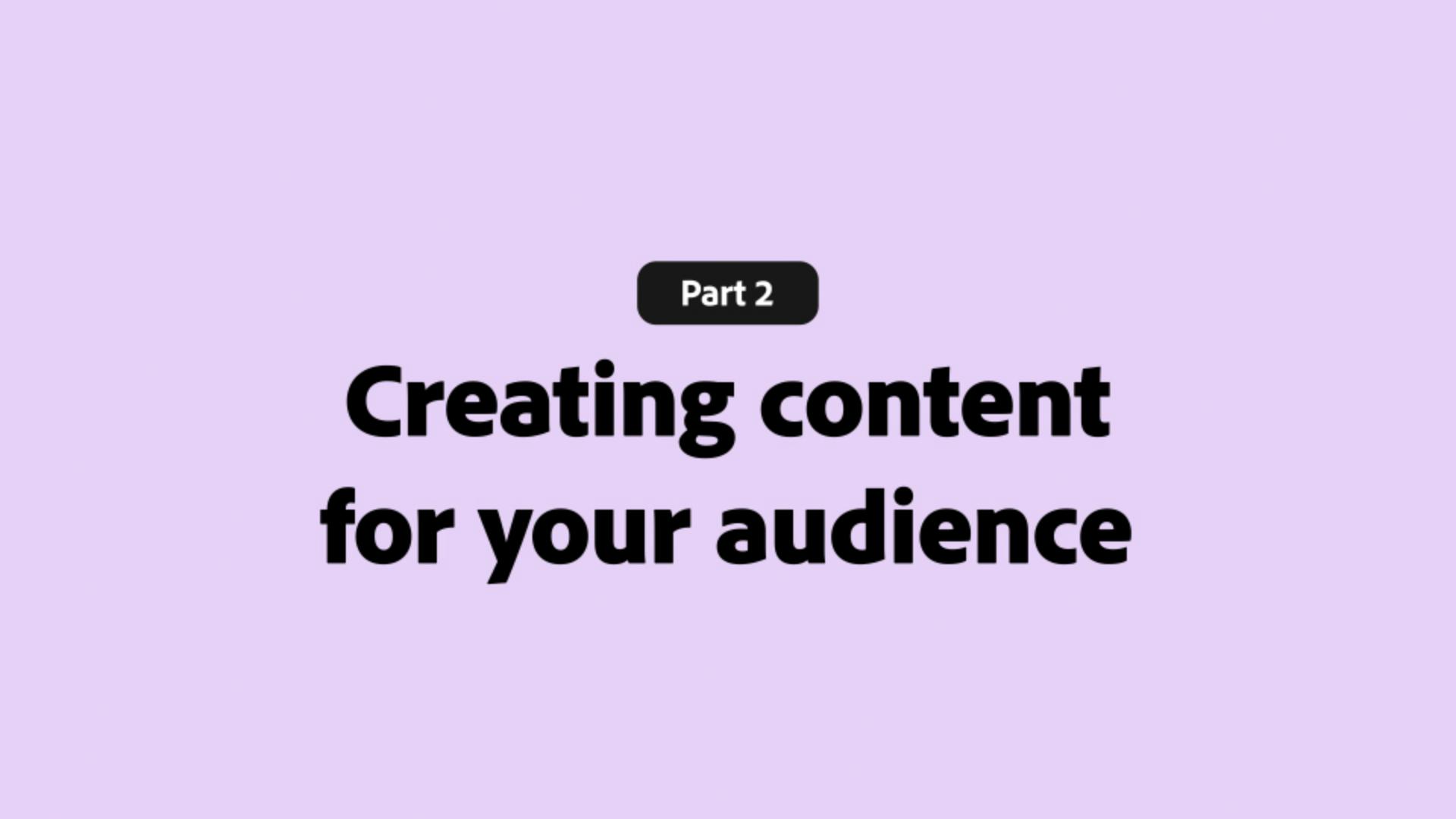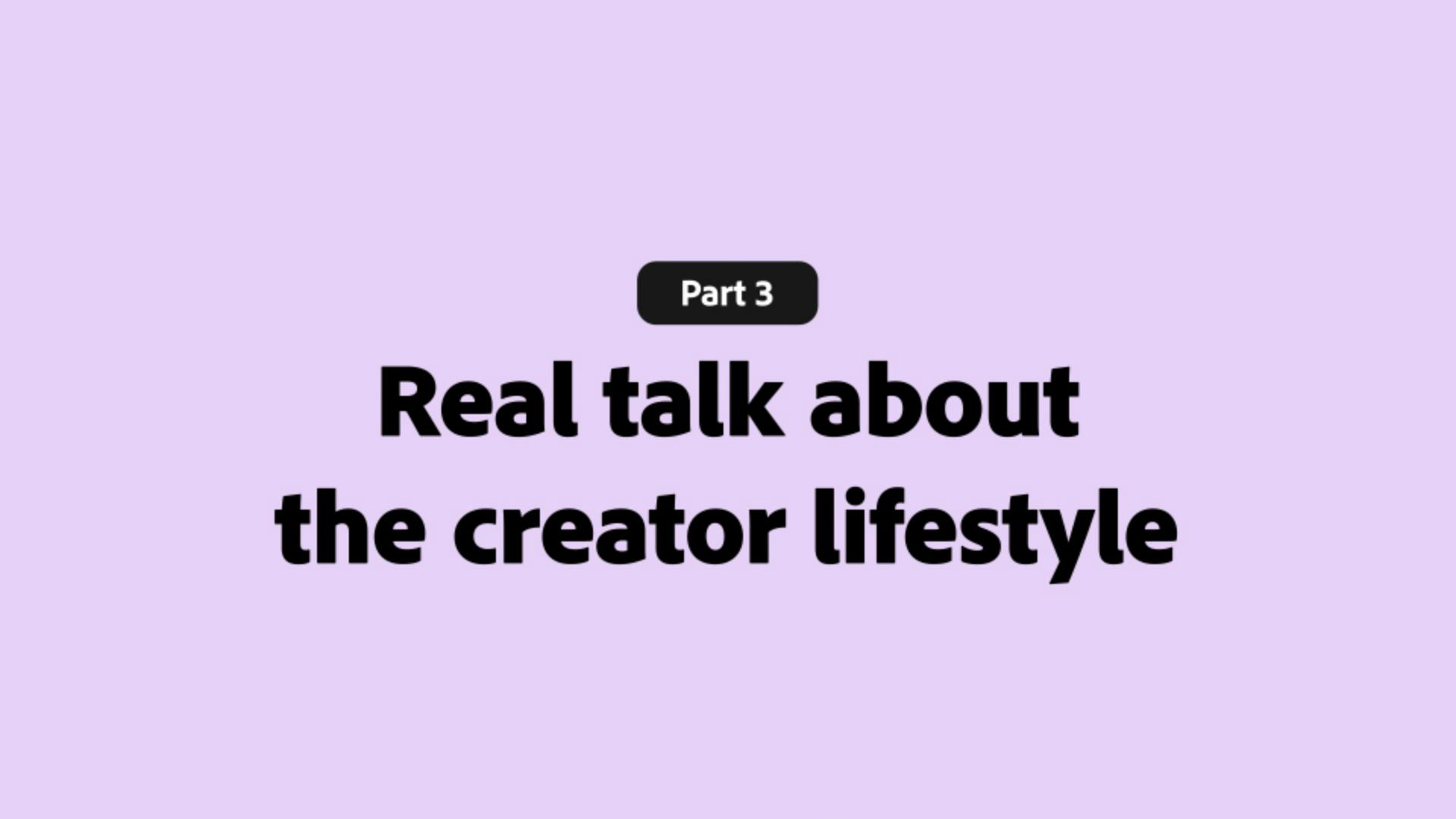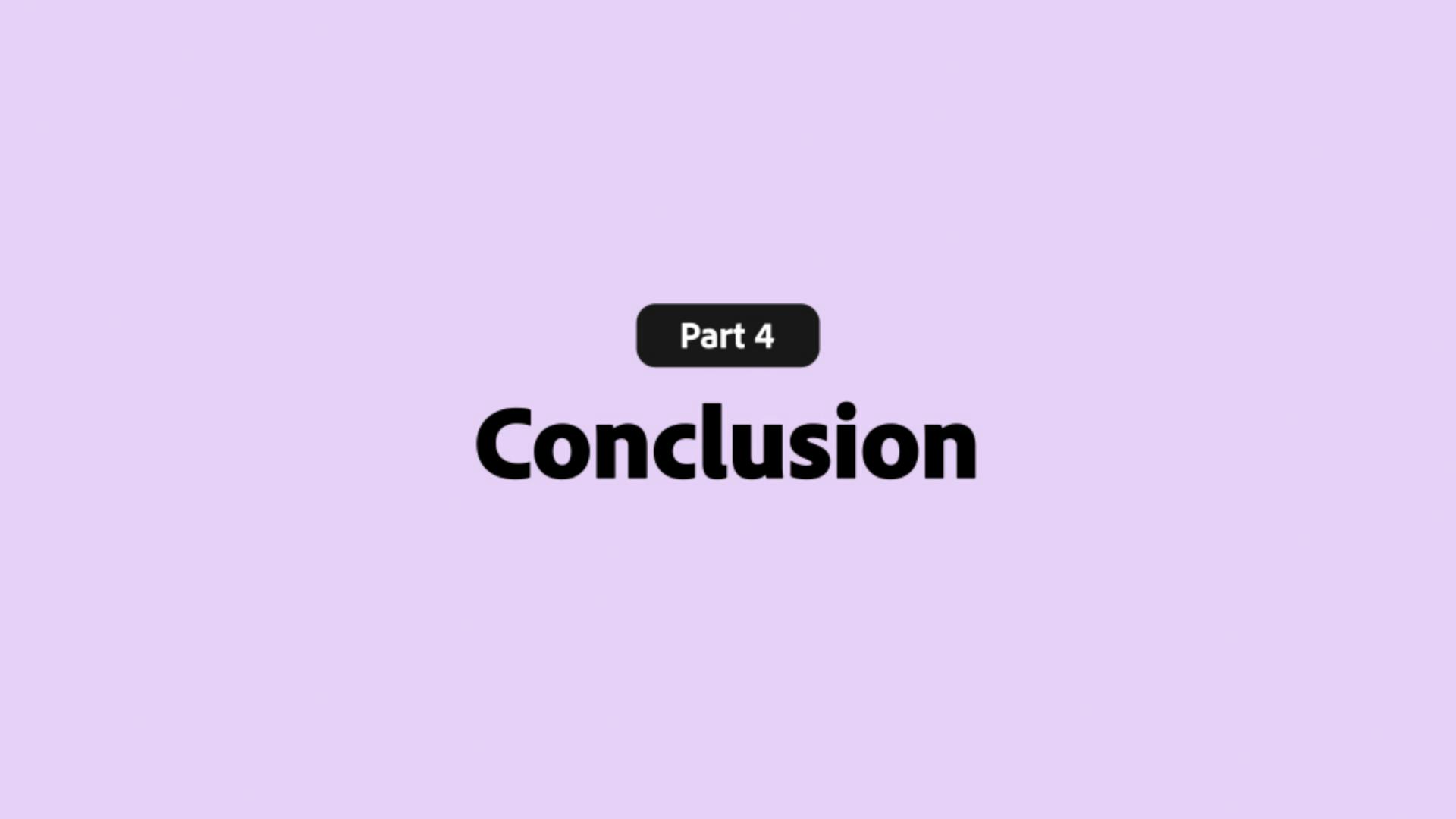TUTORIAL ARTICLE
Beginner
18 min
Crafting authentic narratives
What it means to be authentic, how to craft impactful stories, and identifying your “four formats”.
Practice in the app
Introduction
The term “authenticity” is thrown around a lot these days, but today we’re going to talk about authentic storytelling.
In this course, award-winning actor, storyteller, business owner, and podcast CEO will define what it means to be authentic, how to craft your narratives for impactful storytelling, and how to create content around your– what she likes to call– “four formats.”
Authenticity, vulnerability, and being present
Authenticity–
First things first; let’s define what it means to be authentic.
Humans have a pretty strong b*llshit’o’meter. Our guts can often sense when people aren’t being honest or they’re not being themselves. At its core authenticity is about being honest– it’s the act of being true to yourself and your values.
Authenticity is also magnetic. As humans, we are naturally drawn to people who exude authenticity. Being able to see the common struggles, beliefs, and backgrounds in others helps us relate more deeply to one another.
Vulnerability–
Being an authentic person requires vulnerability. Putting yourself out there, while knowing the world might not accept you, is scary. But vulnerability is one of the key elements of authenticity.
Failures, imperfections, and struggles are part of the human experience. Sharing these parts of ourselves builds trust and allows us to connect with one another in incredible, authentic ways.
Being present–
Authenticity also requires presence. In the world, in self, and in your purpose.
So much of being a creator, a public figure, or even a brand seems like it takes place on the outside, but in reality the people and brands who are making the most authentic content know who they’re making it for.
Knowing things like your demographic, reach, and other stats about your audience can be helpful, but presence in self is also an important step in connecting with your authenticity. For the most part, creators and brands who are making the most authentic, resonant content, are making that content because they’d want to see it.
Being authentic and present also leads to the content you make being more sustainable to make. (We’ll touch a little more on this later.)
Creator pro-tip: Don’t forget to know your boundaries and non-negotiables so people can’t walk all over you. Staying present in yourself, your values, and your self-worth will also help guard you emotionally against the negative comments you may receive when opening up in the online space.
Creating content for your audience
Your audience–
Before we talk about what you’re creating we should talk about who you’re creating it for– your audience!
While it’s true that a certain number of people might “stumble” across you or your brand most people won’t discover you that way and you’ll need to do a little bit of work to find them and to be found by them.
Audience isn’t all a game of chance. You have a large influence over who your audience becomes. (Which is why it’s so important to create from authenticity if you want this audience to be a lasting one!)
My best advice is to find your audience by choosing your audience.
What do I mean by this? Well, have you ever heard the phrase, “you attract what you are”? That same sentiment applies to your audience.
Take a minute and think about why you follow the creators you follow. I’d venture a guess it’s because they make content or have a personality that resonated with you.
Now flip the script and you can see that if you put a certain kind of content or personality into the world that you’ll attract a certain type of person or audience in return.
Creator tip: Another way you can get to know your audience is by analyzing your metrics. Get real with yourself about who your audience is and what they want. The numbers can’t lie!
Your content–
Now when it comes to creating your content, here’s my number one tip: start by finding your “four formats”–
I like to do this by looking at two different things that I’ve already created, and that have performed well, and create around those two things in four different formats.
Creator tip: It’s okay to switch it up and experiment with different formats while you’re figuring your formats out. Experimentation is a part of the process. In the industry, this is known as “A/B testing”.
Import your purpose into trends–
It can be helpful to play in and with trends because the chances go up that that you’ll find your audience faster when you’re creating something that’s being prioritized by the algorithm.
To do this in an authentic way, infuse your purpose into these trends. What’s your take on things? How would you interpret that trend in a way that will resonate with you and your audience. Your POV is yours alone, so lean into that!
Authentic, sponsored content–
This section may be more relevant if you’re an influencer-creator versus a brand-creator, but brands can also take on sponsored content, so let’s talk about it…
The concept of monetizing content as sellout culture sort of began in the 90s / early aughts with “selling out” being perceived as a bad thing, but with the rise of independent content creators, sponsored content has become the norm and viewers expect that creators will take on brand deals and promote products as a part of their content to gain that income stream. If you’ve built trust with your audience, they may even want to know what products and brands you love.
Now, it’s a pretty mixed bag, with people expecting sponsored content from their favorite brands and creators, but still wanting to trust the authenticity of those endorsements.
If you’re thinking about monetizing your content, it will be key to find the answer to why you want to monetize. There could be lots of reasons for this: maybe you want to create an income stream that’s sustainable for your family, maybe you don’t want debt, you want financial freedom, etc. etc.
Your authenticity may be tested when it comes to this type of content. You might take on a brand deal that feels right in the moment, but turns out to not be the most natural or authentic fit when you sit down to create the content.
Give yourself grace for mistakes and to lean into those mistakes, authentically. People are often afraid to put themselves out there for fear of repercussions, but it’s how we learn and being honest about those mistakes is the real key.
Being successful and doing sponsored or monetized content “right” ties back to your ability to remain authentic and knowing yourself and your boundaries; those are the yardsticks to measure against.
You can stay true to yourself by only saying yes to partners that make sense for you. It’s okay to be picky, we’re not operating from a scarcity mindset, here.
Finally, I just want to take a moment to encourage you to take risks. You will make small mistakes. Mistakes are a part of being human. As long as you’re creating from an authentic place that is true to your values, you will be able to come bounce back from those mistakes.
Real talk about the creator lifestyle
Sustainability–
It’s one thing to be a creator, but it’s another thing to stay a creator. The lifestyle and business of content creation is a marathon not a sprint. So work smarter, not harder, wherever you can.
One way you can do this is by turning one piece of content into many. (Like a blog post into posts for X [Twitter], fodder for Reels, or a TikTok script.) Quality vs. quantity is what is important here; so if you’ve created a piece of content that resonates with you and your audience make sure you are getting the most out of it by sharing across platforms. You can use tools like Adobe Express to help you get more from your content, allowing you to quickly resize and reformat content for different channels.
Another way to sustain your content creation journey is to build habits like filming multiple pieces of content in one day and getting ahead of posting by scheduling in Adobe Express’ Content Scheduler.
Creator tip: Work your way up to a full editorial calendar. You don’t have to do everything all at once or be on every platform right away.
Consistency–
Consistency is one of the most important building blocks of sustainability. You’ve probably heard the tip to “stay consistent” over and over again. But what does consistency look like for you?
Consistency doesn’t equal posting a video every day, or even every week. Maybe you’ll post a video every week or a podcast every month– the consistency comes in with sticking to your cadence once you establish it. The great news is that you get to define what consistency looks like for you.
Establishing consistency also builds trust in the relationship you have with your audience. They’ll start to trust when they can expect new content from you and engage with you on that schedule.
Delegation–
This leads us to our final sustainability note… there are only so many things you can do, you’re only human!
As your business grows, it’s highly likely that all areas of your workload will grow, too.
If you’re at the start, make clear delineations between the parts of business you want to be involved in and the parts that you’re comfortable delegating. Know your strengths and your growth areas.
Make a list of:
Things that you’re good at that you want to keep (your clear strengths)
Things that you’re not good at, but you want to be (an area you want to grow)
Things that you’re not good at, but you don’t want to be (an area you can clearly delegate)
Delineate between one-off tasks you may need to hire for (like a logo or brand design) versus on-going support (like a virtual assistant or social media manager).
Creator tip: If you’re looking to hire someone to delegate some of your work to it’s okay (even recommended) to be slow to hire while you’re looking for the right person. Don’t just say yes to anybody. Make sure you can trust them with the sensitive information they’ll have access to.
Conclusion
Conclusion and takeaways–
Authenticity is magnetic and it requires vulnerability with self and others, but it’s worth it because the best content comes from this place.
You’re greenlighting yourself and creating your own momentum when you’re a creator or you own a brand. This can be super empowering, but it’s important to establish your own consistency so you can stay on track and not burn out.
Know your strengths and growth areas and don’t be afraid to delegate.
Find your audience by choosing your audience. Create content for the type of audience you want to attract.
Find your “four formats” and experiment within them until you find what works for you.
Pro tip: “What works” may change over time and that’s okay!
Infuse your purpose in everything you do; this includes trends and sponsored content.
There’s always going to be a new strategy or trend, but staying true to your values, purpose, and authentic self will help you create no matter how the world (or your own business) shifts.
The job of owning your own business, brand, or content creation can be hard, but it’s also fun and rewarding. Give yourself grace as you learn, don’t be afraid to experiment, and remember that we’re all constantly learning.
I hope this course was helpful to you, that you learned something, and that you feel more empowered to lean into your authenticity as you create content for yourself and your brand. Don’t forget to check out my suite of podcast related Adobe Express templates and my other course all about establishing or re-branding yourself.
